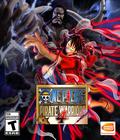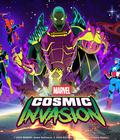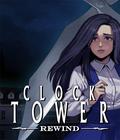Clock Tower is a game franchises that was very influential but never quite managed to capture the appeal of something like a Resident Evil. North America never even got the first Clock Tower game. Instead, we got the second PS1 game, Clock Tower 2, retitled Clock Tower 1, a Final Fantasy-style renaming that continued as long as the franchise did. Clock Tower for the Super Famicom/SNES, eventually rereleased as Clock Tower: The First Fear, is an early example of horror console games. Many modern horror titles owe a debt to that game. Thankfully with Wayforward's port Clock Tower: Rewind, we finally get a chance to experience the original title in English.
Clock Tower: Rewind follows the story of Jennifer Simpson. Raised in an orphanage, she learns that she and her friends have been adopted by a recluse named Simon Barrows. They're brought to his luxurious mansion for what seems to be a fresh start. Unfortunately, their hope only lasts a short while before one of the girls is violently murdered, and the rest find themselves split up in the terrifying Barrows Mansion. Now Jennifer must find her friends and escape while she is being hunted by a mutant wielding a giant pair of gardening shears. He is known only as the Scissorman.
Clock Tower is functionally a point-and-click adventure game with some action tendencies. Most of your interaction with the world is done via moving a virtual mouse cursor with your analog stick. Jennifer can be moved left and right using the shoulder buttons, which means you can move and interact at the same time. This is useful when the game starts getting into its horror elements, but it's pretty much the only thing keeping it from feeling exactly like an old-school point-and-click adventure game.
Of course, horror is a major part of the game. Jennifer is not a standard horror game protagonist; she's more akin to the Final Girl you'd see in a horror movie. She can't fight back directly, and her entire method of surviving danger involves running and hiding. Rather than a standard health bar, Jennifer has a panic meter that reduces when she is in danger and replenishes if she can take a few moments to sit down and catch her breath. If the meter gets too high, she's in danger of dying or getting terrified and running without the player's control.
This is important, as the biggest danger in the game is the Scissorman. He serves the role of Michael Meyers or Jason in the story. He'll constantly be popping out of places, stalking through hallways, and trying to hunt down and kill Jennifer. He's not particularly fast, but he is relentless, and he won't stop chasing her until she's dead or he loses track of her. At low panic, Jennifer can push him over and run past him, but if she's caught in a disadvantageous location or by surprise, she might die then and there.
It's a very atmospheric and intimidating element of the game. Despite the fact that he looks a little goofy and doesn't move particularly quickly, the Scissorman is a frightening foe. However, the game appears to be well aware of this and gives you too many advantages in dealing with him. He's slow enough that you can get ahead of him and sit down and take a rest to recover your panic meter before he catches up. There are also a ton of hiding spots in the mansion and no rules about reusing the same spots multiple times. Once you get a feel for him and get over the intimidation factor, he's not that hard to deal with.
Most of your time in Clock Tower is spent poking around looking for clues, keys, and event triggers that allow you to investigate the mystery of the Barrows Mansion. A lot of the time involves finding specific items and bringing them to the location they are needed, but there are a few puzzles that demand more attention. In many ways, it's a very standard adventure-style game, except that you're constantly being terrorized by a giant ambulatory pair of scissors.
Unfortunately, once you get past the historical value of Clock Tower, it becomes difficult to get around the fact that it hasn't exactly aged super well. It's very easy to see how it was immensely creative, unique and interesting upon release; it's a testament to the strength of the game's design that it carries through into modern days. At the same time, it's kind of annoying to play. The mouse movement done via analog sticks doesn't feel very smooth or natural and can sometimes feel annoyingly imprecise; it's a huge issue when you've got a rampaging mutant with scissors running after your helpless protagonist. The new Rewind feature helps a little, but you're still at the mercy of a game designed for the SNES in 1995.
The other major issue is that the game isn't good at telling you what you need to do, and it sometimes requires absurd leaps of logic, or it requires you to have found an item in a random location, without which you'll be locked in an unwinnable state. Didn't find a piece of ham? Enjoy being eaten alive. Likewise, the requirements to get some of the better endings are bizarre and counterintuitive, frequently rewarding you for doing things like not going to check on someone who just screamed. There isn't a ton of logic involved. If you don't look out a window, then someone inexplicably survives a situation that would've been fatal if you had looked; it's like a bizarre Schrodinger's murder victim.
The above obtuseness is necessary because Clock Tower is also a rather short game. Avoiding the Scissorman and exploring the areas adds a bit of extra time, but you can probably run through the game in about two hours without a guide. Getting the best possible ending might take you a bit more time (or a trip to an online FAQ), but you can see pretty much everything in an afternoon. Rewind is available for a discounted price of $20, but it just isn't a meaty game.
Visually, it has aged as well as a SNES-era horror game can. The gloomy atmospheric sprite graphics are quite nice and distinctive and somehow manage to be spooky despite looking ... well, like 1995 SNES graphics. The attempts to capture a slasher movie vibe works well. What doesn't work well are the newly added cartoon intros; they have a flashy anime style aesthetic that clashes incredibly badly with the game's style. Thankfully, that is more of a minor thing that's been relegated to menus and the occasional pop-up. The audio is quite nice, with atmospheric music that adds to the dread.
Clock Tower: Rewind is a deeply interesting curiosity. It's one of the origins of the horror games that would lead to Resident Evils and Silent Hills, and it's an early attempt to convey the idea of a weak and helpless protagonist facing a stalking evil. It all happened on the SNES. It's an incredibly noteworthy experience if you're invested in the history of game genres, and it's wonderful to have it available with an official translation. However, as a game, it hasn't aged particularly well, and you need a good amount of patience to put up with its foibles to see its strengths.
Score: 7.0/10
More articles about Clock Tower: Rewind










 The 16-bit survival-horror classic returns. Survive, hide, and avoid the deadly Scissorman in this legendary horror classic.
The 16-bit survival-horror classic returns. Survive, hide, and avoid the deadly Scissorman in this legendary horror classic.




















